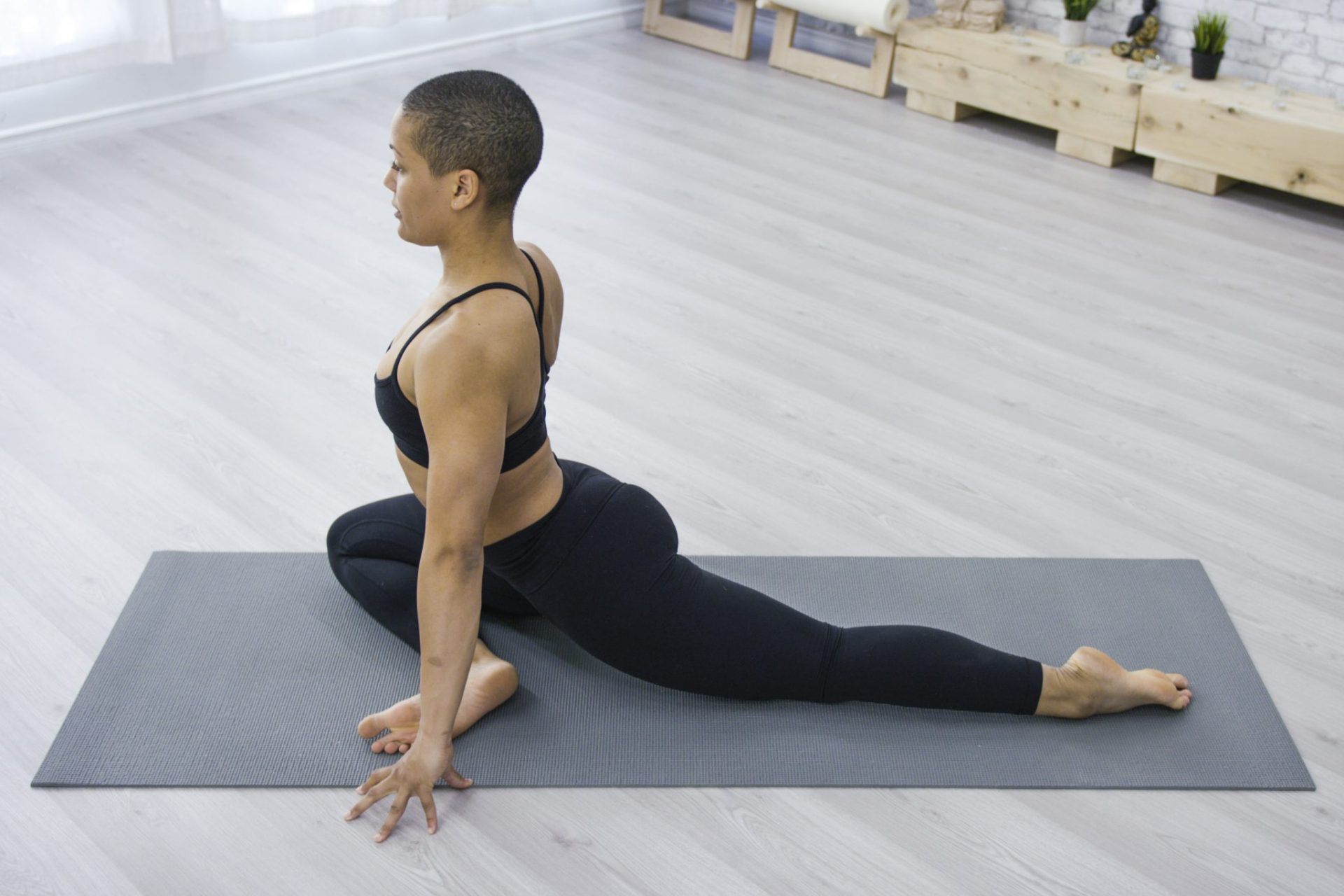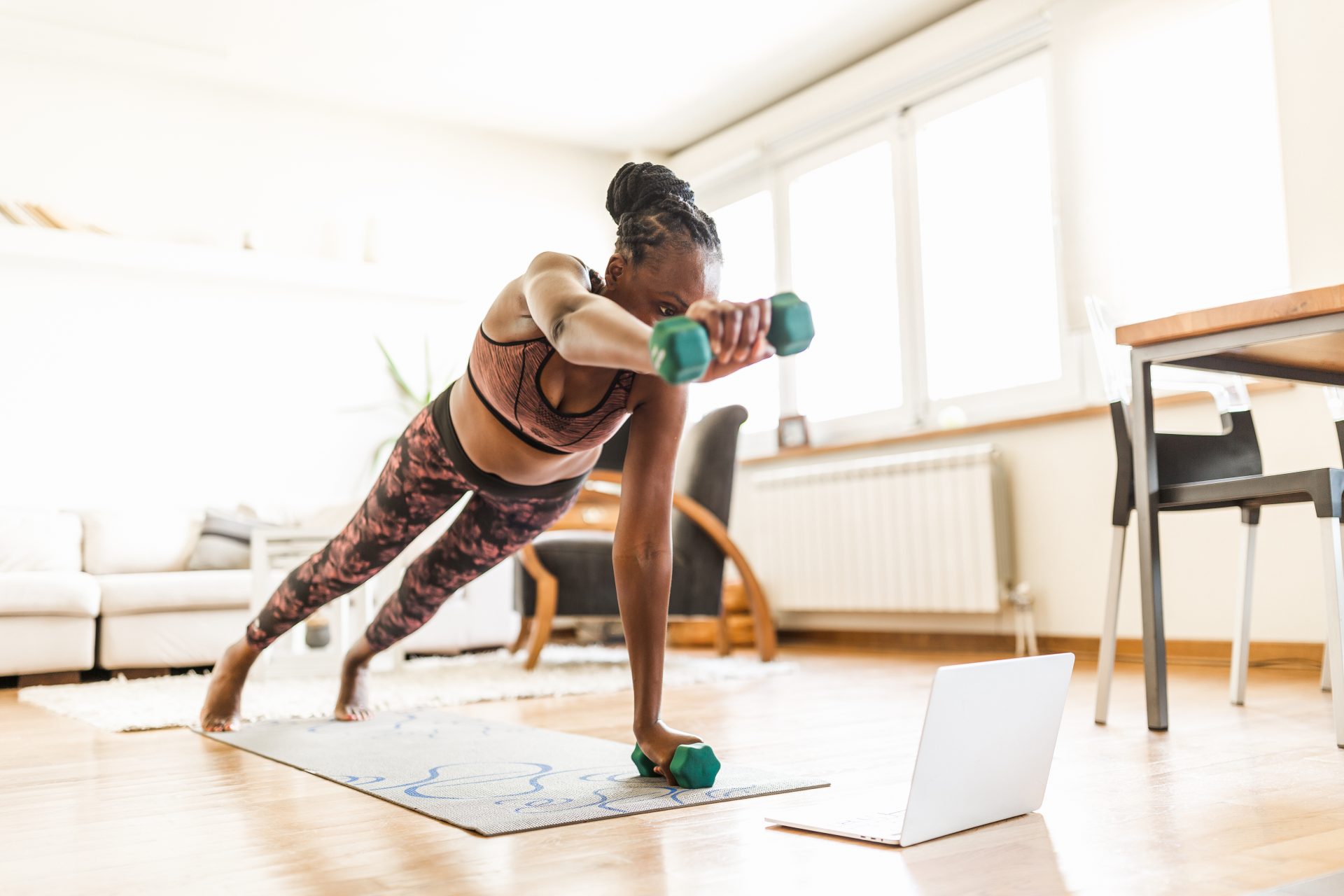3 steps to creating a home workout plan that works

The current climate has made regular exercise difficult, to say the least. If you’re used to regular classes with an instructor guiding you through your training or seeing a personal trainer who puts together your plan, then the irregularity of life might be leaving you and your workouts a little muddled. Even for those who used to fly solo to the gym with a routine that ran like clockwork, it can be hard to motivate ourselves to stick to our usual routine.
But getting some structure into your exercise might be a good plan right now. We know exercise is a great stress reliever and can help us to feel more grounded and content – and who doesn’t want that?
You may also like
What are the benefits of exercise on stress?
“Four key pillars that a good exercise plan has are strength, mobility, flexibility and endurance,” says personal trainer Gemma Mushington. “However, the importance of each of these will vary depending on who the person is and what their goals are.”
While the government recommends 150 minutes of moderate-intensity exercise or 75 minutes of vigorous-intensity exercise a week, what you do in those sessions is totally dependent on you. Those minutes could be made up by running, hypertrophy style training, bodyweight circuits, or whatever it is that you like.
Emma Obayuvana, fitness trainer and member of the Strong Women Collective, agrees that a plan has to be personal. “Everyone is so different with fitness levels and health conditions, so exercise should never be prescriptive,” she says.
How to write your own home workout plan
1. Find the goal
You can’t narrow down how many strength sessions versus how many yoga sessions you should aim for a week unless you know what you actually want the outcome of your training to be. “That’s why I would always recommend starting with the goal. What do you want to achieve from your workouts?” says Emma.
But as well as what we want, we need to think about what our bodies need. “Someone who’s recovering from an injury will need to work a little more on flexibility and mobility. They can’t be diving straight into a strength training programme before they’ve worked to recover,” Gemma says.
So while the average person who wants to exercise to support their physical and mental health could do with a good balance of each pillar, “there will be cases where one element of training is more important than the others,” Gemma adds.
2. Decide on the frequency
Work out how many days you can dedicate to exercise without compromising on other things that are important to you or over-exerting your body. Four? Great. Three? Awesome. One? Cool. “Some people have more time now that we are in lockdown. Others have less. It’s important to be realistic with what you want to do” Emma says.
You may also like
How often should I train? Fitness trainers answer the most Googled questions
As well as considering what hours you work and what family responsibilities you have, you need to consider what your favourite time to train is. “There’s no point deciding to train at 5am for an hour if you hate mornings,” reminds Emma. Similarly, some people love to exercise on the weekends when they don’t have to rush, others prefer to use their days off as a time to totally relax. There’s no right or wrong.
3. Work out your split
Your workout split might see you spend one session working on strength (such as a full-body weights session), another on flexibility and mobility (in the form of a good yoga flow) and another on endurance (perhaps by running or cycling). But it’s important to not look at the pillars of fitness in isolation, says Gemma. “Strength training sessions will usually require a warm-up stretch and, by its own nature, also works on our flexibility and mobility too,” she says.
That means every one of your workouts could entail every pillar of fitness. For example, if you decide to exercise three times a week and you want stronger legs, you could do two lower-body days and one upper body day.
You may also like
Best leg and bum workouts to strengthen your lower body at home
“Within those splits, you might start with a warm-up which entails a little bit of cardio but also mobility and dynamic stretching. And then in your main workout, you might end up doing four strengthening exercises and end on a superset which gets your heart rate up further. Then you could end with a cool down that includes long stretches to relax the body and improve flexibility,” suggests Gemma. Hey presto, you’ve hit every one of your pillars multiple times a week.
And if you are training to get better at running, you need to make sure you don’t just train endurance every day. “You need to put in the time to make sure you’re recovering well with flexibility and mobility training to protect the hips, spine and ankles,” says Gemma.
THINGS TO REMEMBER WHEN MAKING A HOME WORKOUT PLAN
Goals will be “part physical, part emotional,” says Gemma. “It’s a case of assessing and listening to your body,” she says. “Where does it feel weak? Where does it feel stressed and tired? And then pair the body’s needs with what you actually want to do. What sounds fun? What are you motivated for?
You may also like
“I’m not ready to go back to home workouts, but this is how I’ll motivate myself”
That also means it’s ok to deviate from the plan. If you wake up with an upper body day scheduled in the diary but have tight shoulders from a long week sat at your computer, then adapt. “You won’t always be in the mood because it is a difficult, claustrophobic, stressful time,” says Gemma. “But also, maybe the routine you had in mind just isn’t working for you or your body. Maybe training two days in a row is too much, or you decide you really don’t like running. Be open to reassessing the goals so your body gets what it needs, and you feel happy with the plan,” she says.
For Emma, it’s important to remember to schedule in regular movement throughout the day as well as the 20, 30 or 60 minutes you plan for weight lifting, running or yoga. “People underestimate the power of steps,” she says. “It’s not just about how sweaty you get, it’s about being active for your body and brain,” she says.
Follow @StrongWomenUK on Instagram for the latest workouts, delicious recipes and motivation from your favourite fitness experts.
Images: Getty
Source: Read Full Article

